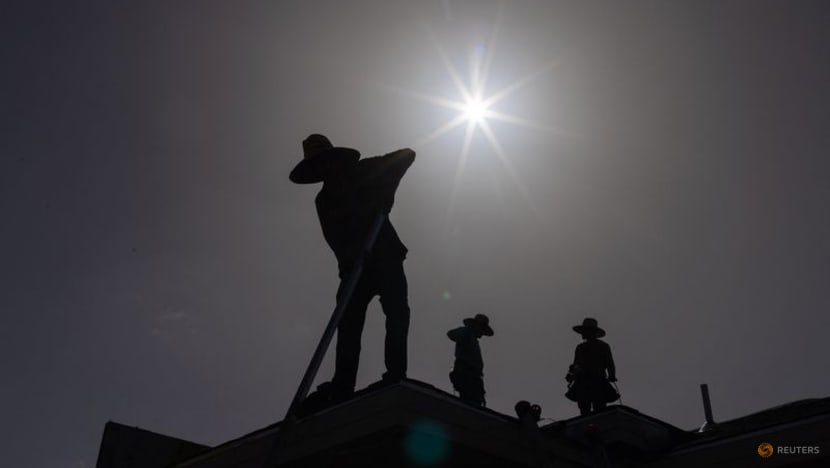Biden's plans to protect US workers from extreme heat faces resistance despite soaring temperatures
The world encountered its hottest month on record in July this year, sparking concerns in the United States over the health and safety of workers in industries whose livelihoods hinge on outdoor work.

CALIFORNIA: The Biden administration’s plans to protect outdoor workers from sweltering conditions are facing resistance, as apprehensions over productivity mount.
The world registered its hottest month on record in July this year.
With temperatures soaring to unprecedented levels, citizens from New York to California have been grappling with the relentless heat.
The intensity of the heatwave has sparked concerns in the United States over the health and safety of workers in industries whose livelihoods hinge on outdoor work.
LACK OF FEDERAL HEAT STANDARDS
Addressing the situation in July, US President Joe Biden said that heat is “the number one weather-related killer” in the US.
He noted that 600 people die annually from its effects, which is more than the combined total from floods, hurricanes and tornadoes.
President Biden instructed the Department of Labor to increase federal inspections of workplaces where workers face heightened risk, such as farms and construction sites.
However, there remains a lack of federal heat standards, with proposals facing opposition in some Republican-led states.
Some states, like California, have mandated employers to provide water, shade, and breaks when temperatures surpass 35 degrees Celsius.

However, similar safeguards have failed to gain traction in states like Florida and Texas.
The pushback against heat protection regulations stems partly from industry groups such as the American Farm Bureau Federation, which argue that a patchwork of regulations could place an undue burden on employers.
Among the most at risk are farm workers, many of whom are undocumented and hesitant to voice their concerns.
Assistant Professor Roxanna Chicas from the School of Nursing at Emory University told CNA: “We were one of the first groups to give farmworkers this temperature pill that they would swallow and that would measure their core body temperature every 30 seconds,” referring to ingestible thermometers that give real-time updates of a person's core body temperature.
“We published a paper showing that their core body temperature does, in fact, go over 38 degrees Celsius … which essentially means that they are working with the fever, except that they have no infection.”
RISK OF HEATSTROKE
Heat stress can increase the risk of heatstroke, which can be fatal in severe cases.
There is also evidence linking prolonged heat exposure to kidney damage.
Scientists expect the situation to only get worse in the coming years.
Dr Juan Declet-Barreto, senior social scientist for climate vulnerability at the Union of Concerned Scientists, told CNA: “We need to prepare not for the impacts that we are seeing today, but we need to prepare for the impacts that are coming, which are going to be worse than the ones that we're seeing.”
A recent study published in medical journal The Lancet estimated that the US suffers a US$100 billion annual loss from the heat-induced decline in labour productivity.
If left unchecked, that number will increase five-fold by 2050, it said.
With temperatures projected to rise even further, the debate over safeguarding workers' well-being in the US and elsewhere is poised to intensify.


















